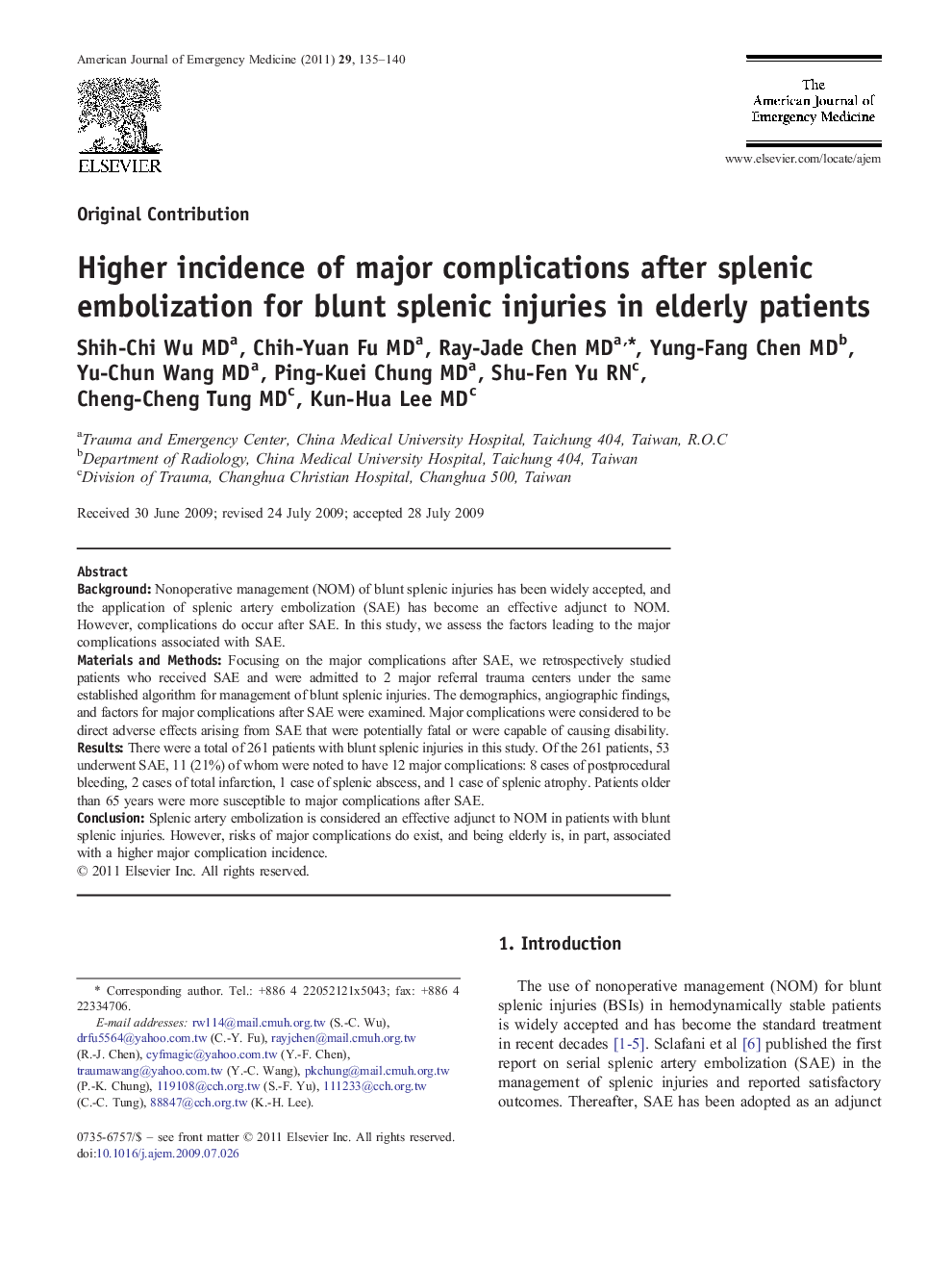| Article ID | Journal | Published Year | Pages | File Type |
|---|---|---|---|---|
| 3226320 | The American Journal of Emergency Medicine | 2011 | 6 Pages |
BackgroundNonoperative management (NOM) of blunt splenic injuries has been widely accepted, and the application of splenic artery embolization (SAE) has become an effective adjunct to NOM. However, complications do occur after SAE. In this study, we assess the factors leading to the major complications associated with SAE.Materials and MethodsFocusing on the major complications after SAE, we retrospectively studied patients who received SAE and were admitted to 2 major referral trauma centers under the same established algorithm for management of blunt splenic injuries. The demographics, angiographic findings, and factors for major complications after SAE were examined. Major complications were considered to be direct adverse effects arising from SAE that were potentially fatal or were capable of causing disability.ResultsThere were a total of 261 patients with blunt splenic injuries in this study. Of the 261 patients, 53 underwent SAE, 11 (21%) of whom were noted to have 12 major complications: 8 cases of postprocedural bleeding, 2 cases of total infarction, 1 case of splenic abscess, and 1 case of splenic atrophy. Patients older than 65 years were more susceptible to major complications after SAE.ConclusionSplenic artery embolization is considered an effective adjunct to NOM in patients with blunt splenic injuries. However, risks of major complications do exist, and being elderly is, in part, associated with a higher major complication incidence.
